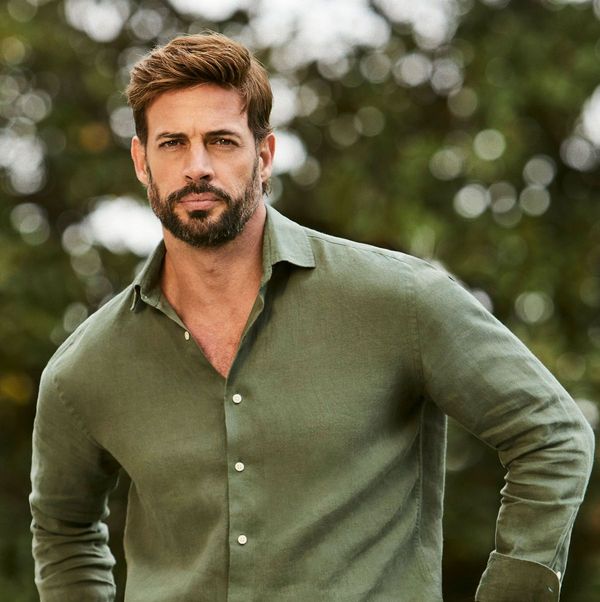
When Vincent Namatjira was living in Perth as a teenage ward of the state, a school excursion brought him face-to-sail with a replica of the HMS Endeavour, the vessel that fatefully delivered James Cook to Dharawal country in 1770. After his teacher announced there would be a prize for whoever drew the ship, the young Vincent got sketching.
“Yeah, I won the prize,” Namatjira tells Guardian Australia with a grin, decades later. “That’s the first time.”
Many more prizes would follow. The now 40-year-old has won some of Australia’s most high-profile art gongs, from his Cook-inspired Ramsay art prize win in 2019 to his Archibald-winning portrait of the AFL footballer Adam Goodes in 2020, and has been awarded an Order of Australia medal to boot.

Namatjira’s colourfully idiosyncratic portraits both skewer and honour their subjects — sometimes at the same time, with what fellow artist and collaborator Tony Albert describes as “guerilla humour”. Often painting himself into the picture, in one scene Namatjira might be seen on a palace balcony gatecrashing a royal family photo op. The next he’s in an Acca Dacca T-shirt, patting a dingo and waving the Aboriginal flag alongside Cook and Queen Elizabeth II.
“I’ve become rocketing,” he says. “Before I ever picked up a paintbrush, I was just a normal Aboriginal fella. And here I am today, popping up everywhere – it’s completely changed my life.”
Back in the 1990s the teenage Vincent didn’t fully appreciate just how art, Cook and those colonial legacies would shape his life. Displaced from his Arrernte family, culture and country at a young age, he didn’t even know the significance of his last name.
“At that time, I didn’t know that I was related to this well-known artist,” he says. “And I never met the guy.”

The western Arrernte artist Albert Namatjira (1902-59) was one of the most well-known Aboriginal figures in 20th-century Australia, painting watercolour landscapes that blended western influences with a unique perspective on country. The elder Namatjira and the Hermannsburg school of artists became a cultural phenomenon but, despite fame and success, Albert faced legal and health troubles that illustrated a gap in this country.
That gap – between white and black Australia – has also influenced his great-grandson’s life. Born in Alice Springs in 1983, Vincent was moved to Perth with his sister and placed in foster care after their mother’s death. At 18 he returned to central Australia with little connection to his mother’s home beyond his surname.
“Getting off that flight, you see a lot of people coming,” he recalls of landing in Alice Springs. “A lot of old ladies, a lot of young people, everybody crying. They didn’t actually know me, I didn’t actually know them. It was from mentioning my [mother’s] name, Jillian Namatjira.”

Eventually Vincent settled in the community of Indulkana in the Anangu Pitjantjatjara Yankunytjatjara lands, started a family of his own and began to paint. The image of his great-grandfather has loomed large in the work he has created since 2012 – from the 13-panel series Albert’s Story in 2014 to a 2023 portrait that formed part of his Desert Songs series – but Vincent has never sought to imitate the recognisable style of his ancestor.
“We have both had to fill our legacies,” he says. “I want the audience to see my work and my name, Vincent Namatjira, with the work of modern art – more portraits, figurative. It’s colourful and bold.”

Many of Vincent’s portraits pay affectionate tribute to his heroes, including his artist father-in-law, Kunmanara (Jimmy) Pompey, Archie Roach, Nicky Winmar and Eddie Koiki Mabo.
But he also takes aim at the rich, white and privileged – with status-puncturing irreverence. There’s his 2016 series Prime Ministers, which depicts the seven Australian leaders of Namatjira’s lifetime mugging for the viewer with grey eyes and white teeth. Or 2018’s Vincent & Donald (Happy Birthday), in which Namatjira and Trump share a birthday cake (both men were born on 14 June) alongside a bag of McDonald’s and a red hat that reads “Make APY Great Again”.

“See, humour,” Vincent says of the latter, pointing to the cake knife his painted self holds ambiguously between a planet Earth-themed chocolate cake and the then US president’s abdomen.
Vincent often describes his art as a weapon, and despite moments of levity there’s a keen edge of subversion informed by his years in the systems these powerful figures preside over.
“To be honest, I would like the government to apologise [for] taking these young Indigenous people into foster care,” he says. “In reality, we are losing much more of where we’re originally from, and our background, and our history. We have lost a lot of things, our culture, languages and our tradition.”
Among prime ministers, royals and chief executives, painted portraits typically convey the power of their position – officially commissioned for palaces, parliaments or boardrooms, with artists granted rare access to their famous sitters. Vincent’s portraits, on the other hand, painted in his studio at Iwantja Arts in Indulkana, are gleefully unofficial and defiant.
“When I paint the queen on country or the king on country, it’s like taking away their power, putting us level with the rest of the world. And also, here in Australia, Indigenous people should be more powerful than the royal people.
“To me, I see myself as a royal,” he adds, recasting his great-grandfather’s 1954 meeting and handshake with Queen Elizabeth II as an equalising moment between two very different dynasties.

In June Namatjira turned 40, and will this month launch a monograph and major survey exhibition as part of Tarnanthi festival, the Art Gallery of South Australia’s annual celebration of Aboriginal and Torres Strait Islander art.
Collating this formative decade of his work, the exhibition’s title, Australia in Colour, alludes to “the blue skies, the red deserts, the green hills, the yellow fields, the blue oceans, the white sands, the creek beds” seen in the backdrop of Vincent’s portraits. But it’s also a more visceral reflection on a continent thrown into stark contrast.
“Australia in Colour is gut-wrenching painting, and hard work,” he says, in an interview that took place before Saturday’s failed referendum vote.
“And around here, this is the hard country, we work hard to be who we are today. Indigenous people, we want to be heard and to take a stand. To show our tradition and culture, and art – also to show the rest of the world that Indigenous people, we need to be heard.
A few decades after winning that classroom prize with his sketch of the Endeavour, Vincent’s success means that for many younger audiences, the name “Namatjira” brings to mind his name, not Albert’s.
“They tried to do what Albert Namatjira left them, that kind of technique with watercolour painting,” he says of his great-grandfather’s legacy. “To be honest, I’d like my family and my culture and tradition to change their ways, and go forth and broaden the name.
“To choose. He chose his own path. Well, I choose mine.”
• Vincent Namatjira: Australia in Colour opens on 20 October at the Art Gallery of South Australia before touring nationally. Desert Songs is showing until 28 October at Yavuz Gallery in Surry Hills, Sydney. Vincent Namatjira (Thames & Hudson) is out now.
• Walter Marsh travelled to Yavuz Gallery as a guest of the Art Gallery of South Australia







